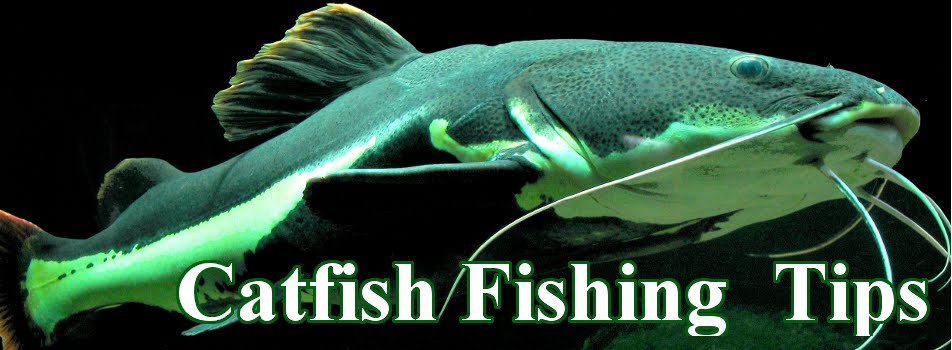Essential Things To Know About Catfishing
If you are a novice fisherman looking to spend your afternoon
near a cool breezy lake, catfishing can present an interesting
challenge. Catfish are large ray-finned fish found all over North
America. People usually fish for blue, flathead, or channel catfish in
the United States where these species are abundantly found in lakes,
ponds, and rivers. Catfish flesh is known for its delicate and delicious
taste. Catfish are also artificially farmed for food. Some flathead
catfish can grow up to 1 meter in length and 200 pounds in weight. You
should carry medium to heavy action rods when you go catfishing.

You can recognize the catfish for their lack of scales on their body. Catfish also have prominent "whiskers", a specialized sense organ called barbells. These barbells help the catfish to hunt for food even in muddy waters where visibility is low. These fish are negatively buoyant and are typically found feeding on the debris and fish at the bottom of the water body. If you want to spot a catfish, you ought to look in the holes, logs and other hideouts on the river bed. Chances are you will find a monster cat hiding in one of these hideouts. Catfish sting so if I were you, I'd be careful when I handle them. If you ever get stung, rub the tail of the catfish on the wound; you will feel better almost instantly. And don't worry; catfish sting is not fatal and it won't hurt for too long either.
If you have done fly fishing before, don't take your light rod with you. Catfish are big and heavy. You will need to buy a different rod for catfishing. You can usually check the label on the rod to see if it is a medium action rod: that's the kind of rod you will need for catfishing. You can also forget lures. Catfish are usually caught with prepared bait. Some species like flathead catfish even prefer live baits like blue gills and sun fish. The line you sink is to be lowered in carefully and kept steady. And you need to attach one or two ounce weights to the line so that your bait sinks below the surface of the water. As you can see, catfishing is quite different from flyfishing. (Please note that catfishing with live baits is illegal in some states, so please check with your local authorities before you go fishing with live baits.)
Most fishing enthusiasts prefer to go fishing for catfish in summers May through September, when the catfish are easier to find in the flooded brush on the river bends and banks of the ponds. But if you really love the challenge of it, you could go looking for catfish even in winters. This activity, also called icefishing, is very popular in some parts of United States. Just make sure you carry lots of warm clothes and hot chocolate for your fishing trip. Mmm... wouldn't that be exhilarating? Do ask your friends to join you for the trip.
You can recognize the catfish for their lack of scales on their body. Catfish also have prominent "whiskers", a specialized sense organ called barbells. These barbells help the catfish to hunt for food even in muddy waters where visibility is low. These fish are negatively buoyant and are typically found feeding on the debris and fish at the bottom of the water body. If you want to spot a catfish, you ought to look in the holes, logs and other hideouts on the river bed. Chances are you will find a monster cat hiding in one of these hideouts. Catfish sting so if I were you, I'd be careful when I handle them. If you ever get stung, rub the tail of the catfish on the wound; you will feel better almost instantly. And don't worry; catfish sting is not fatal and it won't hurt for too long either.
If you have done fly fishing before, don't take your light rod with you. Catfish are big and heavy. You will need to buy a different rod for catfishing. You can usually check the label on the rod to see if it is a medium action rod: that's the kind of rod you will need for catfishing. You can also forget lures. Catfish are usually caught with prepared bait. Some species like flathead catfish even prefer live baits like blue gills and sun fish. The line you sink is to be lowered in carefully and kept steady. And you need to attach one or two ounce weights to the line so that your bait sinks below the surface of the water. As you can see, catfishing is quite different from flyfishing. (Please note that catfishing with live baits is illegal in some states, so please check with your local authorities before you go fishing with live baits.)
Most fishing enthusiasts prefer to go fishing for catfish in summers May through September, when the catfish are easier to find in the flooded brush on the river bends and banks of the ponds. But if you really love the challenge of it, you could go looking for catfish even in winters. This activity, also called icefishing, is very popular in some parts of United States. Just make sure you carry lots of warm clothes and hot chocolate for your fishing trip. Mmm... wouldn't that be exhilarating? Do ask your friends to join you for the trip.
George is a catfishing expert. Wants to learn more great tips
about Catfishing habitat, species, and more
[http://www.catfishingpoint.com/catfishing-info-habitat-species-and-more..]?
Visit my site [http://www.catfishingpoint.com].
Article Source:
http://EzineArticles.com/expert/George_Landrail/1026169

